
Of all the "Ugly American" incidents my country has been involved in since the end of World War II, from the Cold War to the present, this one is personal to me because it happened to take place on my birthday. I've compiled information from various sources, hoping to provide English speakers some background to this piece of U.S. and Panamanian history. ~Alison
 |
|
||

The Flag Which Doesn't Bend
The history as reported in La
Prensa (excerpts translated by Jorge Alegria)
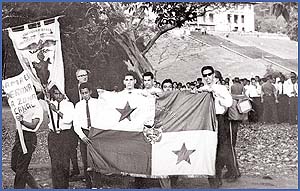 On January 9, 1964, at
4:50 PM, around 200 male and female students exited the
Instituto Nacional heading to the Balboa High School to
hoist the Panamanian flag. During the walk, students
stopped singing the national anthem to pay respect to
the sick at the Gorgas Hospital. Two police cars headed
the peaceful manifestation.
Guevara Paz and Francisco Diaz made a deal with the Zonian officials to accept a six-student delegation, among them the Instituto Nacional flag bearer, and a classmate who was carrying a banner which read: "Panama is sovereign in the Canal Zone". The delegation arrived close to the flagpole area to sing the national anthem and raise the Panamanian flag at the Balboa High School, where mainly zonian students attended. On the balconies and at the entrance of the high school was a hostile crowd of aproximately 2000 zonians. Suddenly, the six-student delegation from the Instituto Nacional was surrounded by hundreds of students and adult zonians.
The feeling of patriotism fogged the "Instituto Nacional" students eyes when a policeman from the "Canal Zone" ripped apart the Panamanian flag by using a stick. During the commotion, multiple hands pulled and tore the flag. In the middle of "raining sticks", the students ran to protect the flag. Somebody pointed at the United States
flag on top of the Administration building, with the
intention of getting back at the offense, however,
zonian patrol cars and police had already taken
their weapons out, and from the civil population
homes, guns were already showing. |
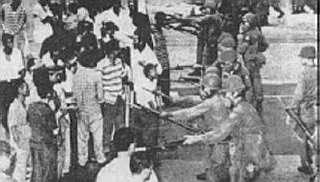
The massacre On the way back, Guillermo Guevara Paz and Rogelio Hilton, president of the association for the senior class at the Instituto Nacional, and classmates destroyed a construction scaffolding from the Gorgas Hospital and threw it on the streets in an attempt to deter the ferocity of their followers. They started hearing similar noises to
firecrackers, but since it was not the 4th of July,
the US independence holiday, they realized they were
gun shots. It was around 6:30 pm when they crossed the "4th of July" avenue and arrived at the "Calle J" bus stop. News spread along the city and canal zone limits. Hundreds of students and people, indignant about the offense to the Panamanian flag, started throwing rocks at the students and adult zonians. The first wounded began to appear;
Ascanio Arosemena's shoulders were bloody from all the
wounded he had carried, but a bullet from a caliber-22
rifle made him the first martyr.
|
|
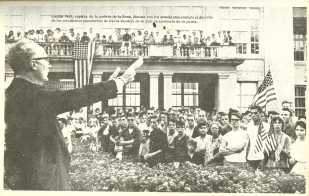 Police Captain Wall addressing Balboa students |
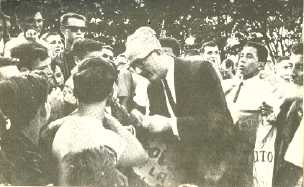 Zone students won't back down |
|
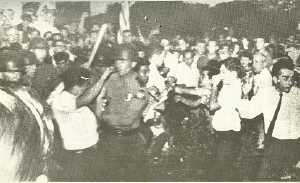 Fighting breaks out |
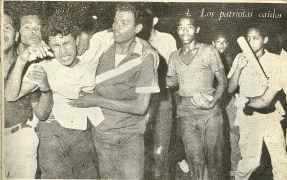 Ascanio Arosemena, in striped shirt, helps a wounded boy to the hospital, minutes before being killed |
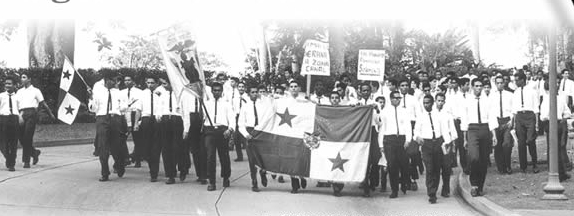 |
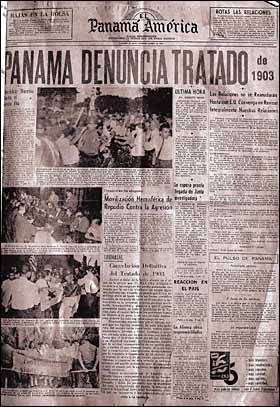 |
| No
U.S.
sources refer to the civilian 'Zonians' doing any
shooting. A report by Captain
Gaddis
Wall of the Canal Zone Police said "Since there was
scuffling, pushing, and physical struggle between the
Canal Zone police and the Panamanian students, the four
Panama students holding the flag apparently tore it
themselves during the scuffle." The LIFE magazine
reported, "When rumors spread that their flag had been
desecrated, a mob, spurred on by Castro agents, gathered
in the streets and snipers began to attack U.S.-owned
buildings." Fears of Cuban influence were apparently
strong. Another article from La
Prensa by Betty Brannan Jaén indicated President
Lyndon Johnson was convinced the disturbances were
'inspired by Communists.'
LIFE: "The fighting, which resulted in the deaths of four U.S. soldiers and 19 Panamanians [actually 22], began after U.S. and Panamanian students clashed over whose flags would fly in the U.S.-administered zone. But it was fed by years of Panamanian discontent over the canal, by troublesome Castro agents, and by the presence of patriotic but misguided Americans who did not realize that they were away from home." The LIFE reporters interviewed other U.S. 'Zonians' - "There were other interviews - many of them. These Zonians scattered the blame widely among Latin American politicians, Communists, Castroites, hoodlums, hot-tempered Panamanian students, irresponsible Panamanian radio broadcasts. None accepted any responsibility whatever for the shedding of blood." 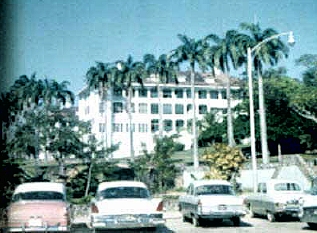 The Tivoli Hotel
Rubén Blades: "Something snapped [in me]. I couldn't justify this. They [the U.S.] were supposed to be the good guys." (New York Magazine
8/18/85
"They turned friends
into enemies. Even today, that's the pity of U.S.
policy in Latin America."
|
Three more days of riots
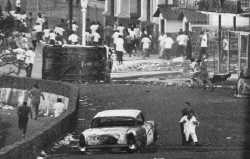 "Rioters
rescue a comrade shot trying to enter the U.S. zone. The
man was not shot by U.S. troops. [...] In the early
stages of the rioting, before the Army took over, the
Canal Zone U.S. police were in charge. Using tougher
tactics, they were reported to have fired directly into
the mob." (LIFE)
From the Latin American Data Base : "Riots ensued, street fighting between U.S. military personnel and Panamanians, resulting in $2 million in property burned or otherwise destroyed (mainly US), 28 dead, 300 wounded and 500 arrested. Panama broke relations with the US for several days. From Historical Text Archive : President Chiari demanded an OAS and United Nations investigation of what he called US aggression and suspended diplomatic relations. Shortly thereafter, negotiations on a new treaty began. |
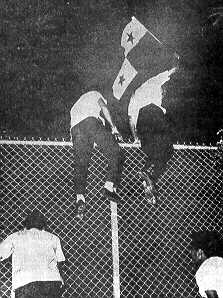 My friend
says, "In the process, Panamanians destroyed some US
property on the other side of the fence (Panama's side),
including the Pan American Airlines offices. There was
also some stealing of US property. |
LIFE reporters with the US soldiers
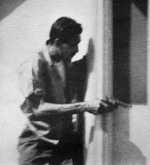 The
soldiers sit in the Masonic Temple with empty
rifles, [initially] under orders not to fire. "When [photographer] Wayman and I arrived
the battalion had suffered casualties of three dead
and 16 wounded by gunfire and 43 more injured by
glass and rocks and tear gas burns."
|
|
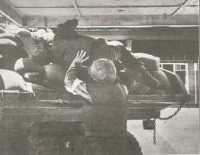 "Somebody's hit!" Sp/4
Alfred Corbett was hit in the arm by a sniper's
bullet. Corbett was reportedly a native of Panama and
lightweight champion of the U.S. Armed Forces (here
helped onto a sandbagged truck.)
|
|||||||||||||||
| More LIFE photos |
|||||||||||||||||
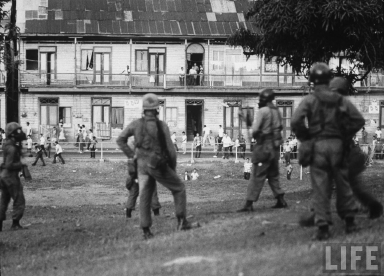 U.S.soldiers are taunted by 'slum dwellers' |
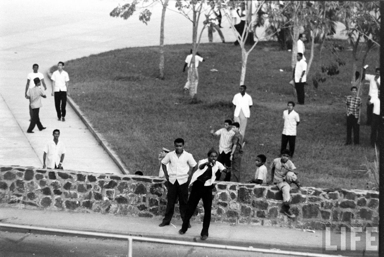 |
||||||||||||||||
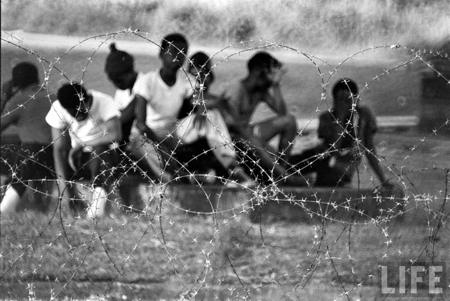 |
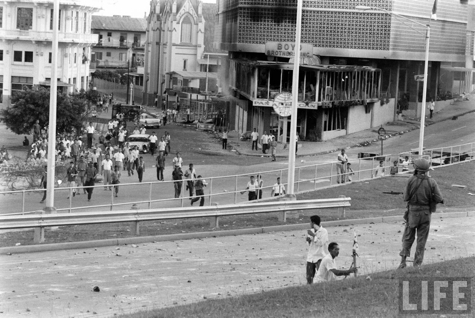 |
||||||||||||||||
|
|||||||||||||||||
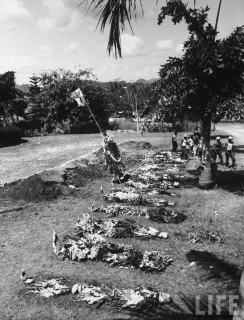 graves |
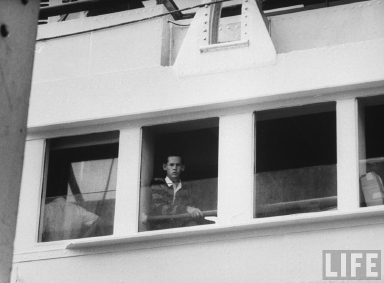 James Jenkins leaves Panama |
||||||||||||||||
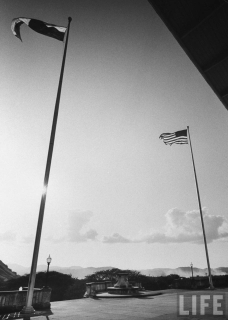 Two
flags flying Two
flags flying |
|||||||||||||||||
|
|
|
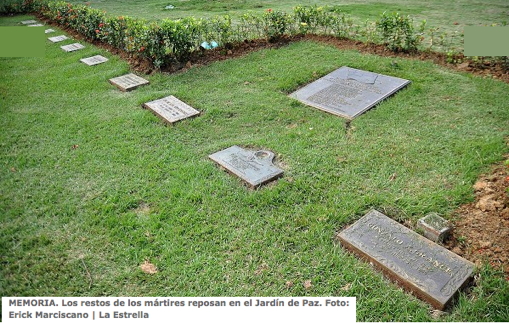 |
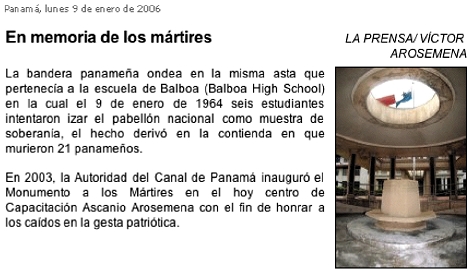 |
 |
 |
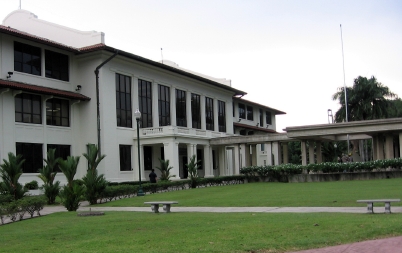 |
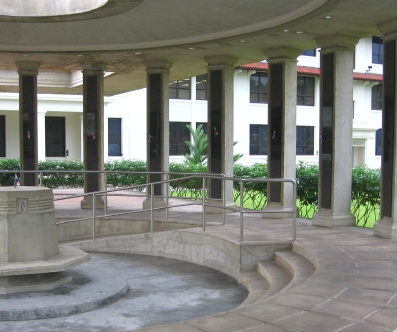 |
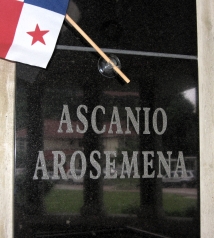 The names on the columns: Maritza
Alabarca, Ascanio Arosemena,, Rodolfo
Benitez, Luis Bonilla,
Alberto Constance, Gonzalo Crance, Teofilo De La Torre, José Del Cid , Victor Garibaldo, José Gil, Ezequiel Gonzalez, Victor Iglesias, Rosa Landecho, Carlos Lara, Gustavo Lara, Ricardo Murgas, Estanislao Orobio, Jacinto Palacios, Ovidio Saldaña, AlbertoTejada and Celestino Villareta. Gonzalo A. France (?) and Evilio Lara have been listed among the dead elsewhere. |
 |
 |
 |
 |
 |
 |
 |
 |
|
 |
 |
 |
 |
|
 |
 |
 |
 |
|
 |
 |
 |
 |
| The Goethals
Memorial fountain, with the former Balboa Elementary
School |
Centro de
Capacitación Ascanio Arosemena |
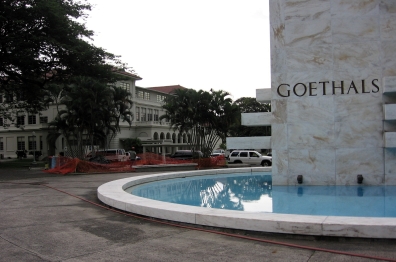 |
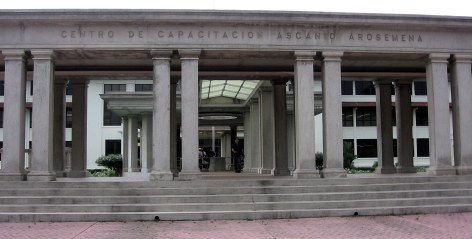 |
From a Panama News article about the 2003 march commemorating the anniversary: "This student represented the purest, clearest example of dignity," Father Sanjur said at the small, unpretentious grave of Ascanio Arosemena. "This must be remembered by every Panamanian, so that we can be a sovereign and prosperous nation."
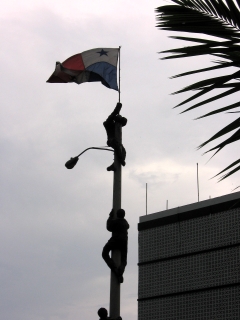 |
 A life-sized monument in the form of a lampost, with three figures climbing it to raise their flag, as documented on the cover of LIFE magazine. |
|||
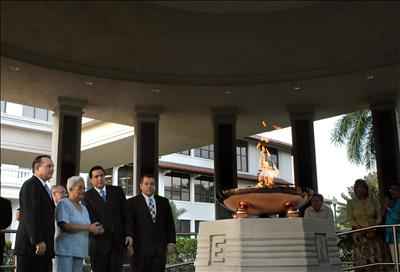 Martín Torrijos, Marcelina Chávez de
Arosemena
|
Llama eterna por lo caídos 9 de enero de 2008 EFE/ "Mi hijo murió por sus ideales y por el amor a su patria. Espero que las actuales y futuras generaciones lo recuerden siempre, al igual que al resto de los mártires que ofrecieron su vida hace 44 años". Esas fueron las primeras palabras de la señora Marcelina Chávez de Arosemena, madre del mártir Ascanio Arosemena encender el pebetero de "La Llama Eterna" que flameará los 365 días del año en el mismo lugar donde se suscitaron los hechos en 1964. Acompañada del presidente Torrijos, del administrador del Canal, Alberto Alemán Zubieta y del ministro, Dany Kuzniecky, la madre del "Mártir" le tocó encender el pebetero que se construyó en honor a esos panameños que ofrendaron su vida por la soberanía de la patria. |
|||
|
||||